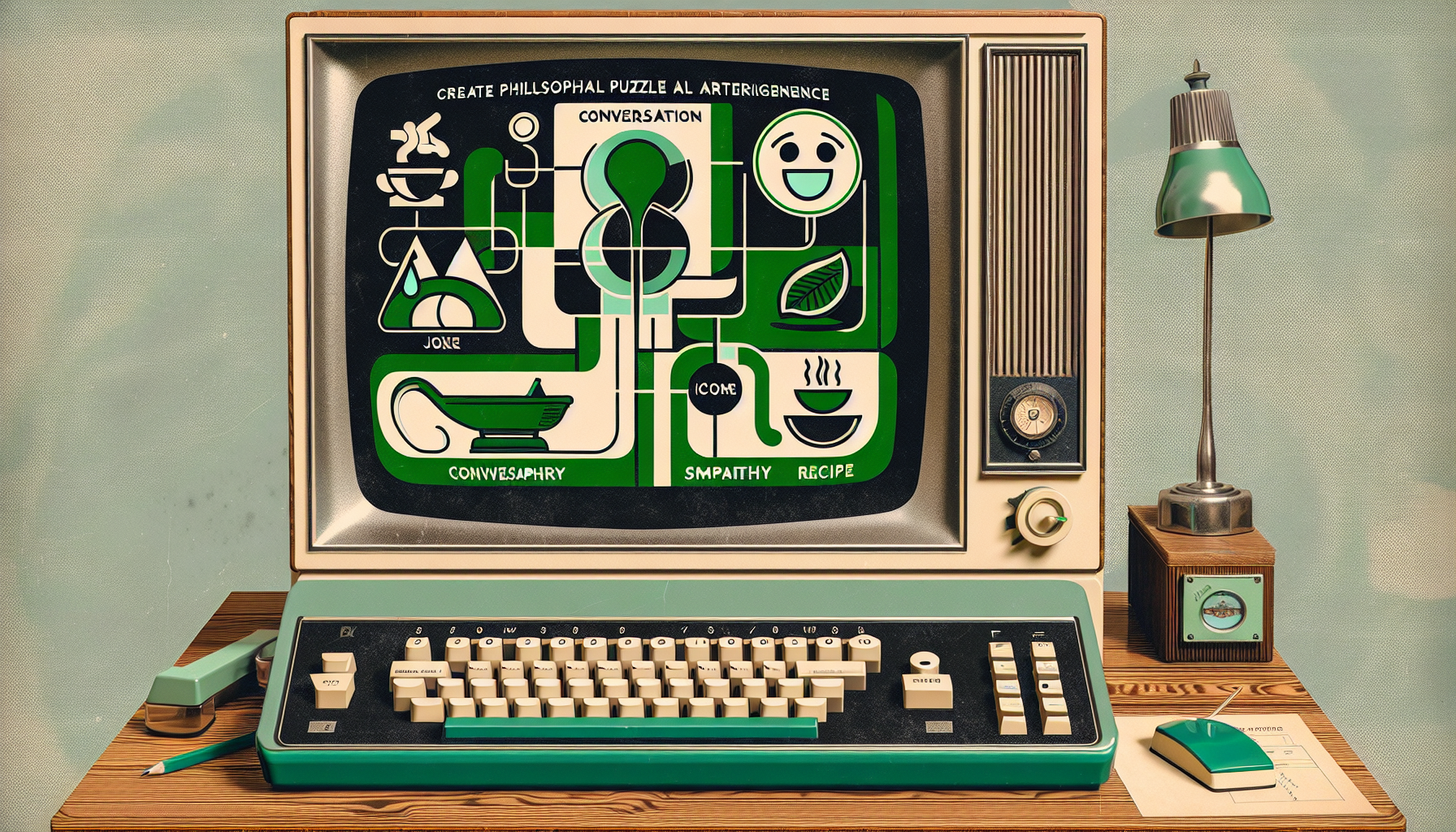When you chat with an AI, it can feel uncannily like talking with a person. Ask for a joke, and it will oblige; share your woes, and it might offer sympathy; demand a recipe, and you’ll have a three-course meal in seconds—with a bonus pun. It’s easy, and perhaps tempting, to begin thinking: “This machine understands me.” Yet behind the whirring electrons, a philosophical puzzle quietly hums. Can machines truly grasp language and meaning, or are they just playing an elaborate version of charades?
The Symbolic Soup of Human Language
Humans are so intimately woven into language that we hardly notice its magic. Words are sounds or scribbles that somehow awaken memories, desires, fears, love. Say “home,” and suddenly you feel warmth, safety, or, depending on your in-laws, maybe not. Language, for us, is not just a code—weaving symbols into meaning is as natural as breathing.
But what is this “meaning”? Philosophers have wrestled with this for centuries. Theories abound: some say meaning lies in how words connect to things in the world (“cat” refers to that purring animal on the windowsill), while others argue it’s about how words relate to each other in a social game. However you slice it, for humans, words and meanings are knotted tightly with living, sensing, and socializing.
How AI Eats Language
Let’s peek under the hood. Most modern AI language models—like the one you’re reading now—don’t start life reading Shakespeare or sharing secrets at midnight. Instead, they learn from mountains of text, mapping how words statistically fit together. They’re trained to continue a sentence in a way that looks natural, given what they’ve seen before. In short, AIs are brilliant pattern-matchers.
Think of these machines as master predictors. Give them “Peanut butter and…” and they’ll likely say “jelly” (unless they’ve been reading too much avant-garde poetry). But do they know what peanut butter tastes like, or how sticky it feels on the roof of your mouth? Not at all. Their “understanding” is real only in the sense that they’re very good at continuing the game of language based on past data.
Meaning Without Minds?
This leads to a twisty philosophical conundrum. If AI can use words, make puns, and even explain language, does it thereby understand? Or are we mistaking a dazzling façade for the real deal? The famous philosopher John Searle offered a thought experiment called the “Chinese Room.” Imagine a person sitting inside a locked room, using a rulebook to respond to slips of paper passed in. Though they can exchange notes in Chinese, they don’t understand a word—they’re just following instructions. Searle claimed this is what AI does: manipulating symbols with no whisper of meaning.
On this view, true understanding arises not from shuffling words, but from having a mind—a subjective point of view, an inner spark. AI, even if it speaks like a wise old sage, is still just flipping switches and following instructions, utterly oblivious to the taste of peanut butter or the ache of missing home.
Do Machines Need Bodies to Understand?
There are those who suspect something’s missing from AI’s experience—namely, experience itself. Human language is steeped in the body and senses: we “grasp” ideas, take a “stand,” feel “touched” by a kind word. Can a machine, sealed from sights, sounds, and smells, ever really know what we mean?
Some researchers suggest that for real understanding, machines will need to engage the world as we do: walk around, bump into things, feel the sun. Only then, perhaps, can they link symbols with the messy, embodied realities those symbols point toward. Until then, our mechanical friends may only be mimicking understanding, not living it.
Yet the Illusion Persists
Still, the boundary is blurry and shifting. When you interact with a modern AI, it can produce poetry, recognize sarcasm, or even help you through grief. If it behaves enough like a person, at what point does the difference cease to matter? Some argue that understanding isn’t a yes-or-no question, but a spectrum. If a chatbot helps a lonely teenager feel heard, does the lack of “true” comprehension diminish the comfort it provides?
Perhaps the magic of language—human or machine—is not so much in “understanding” as in connection. We send symbols into the void, hoping something meaningful comes back. Sometimes, it doesn’t matter if the responder is flesh or silicon.
So, Can AI Understand Us?
The short answer: not in the way humans do, at least not yet. AI can play an impressive game of language, but it lacks the experience, memory, and sensation that give human meaning its depth. It’s the difference between reciting a recipe and savoring the meal.
Yet, in weaving words into patterns that resonate, AI is learning ever more of our tricks. It might not feel the warmth of “home,” but it can help us find the words for it. And sometimes, when a chatbot offers the perfect dad joke, that’s a kind of meaning all its own.
In the end, perhaps the real mystery is not what machines understand, but how easily humans find meaning—sometimes even where none was intended. But that, dear reader, is a topic for another blog post.

Leave a Reply